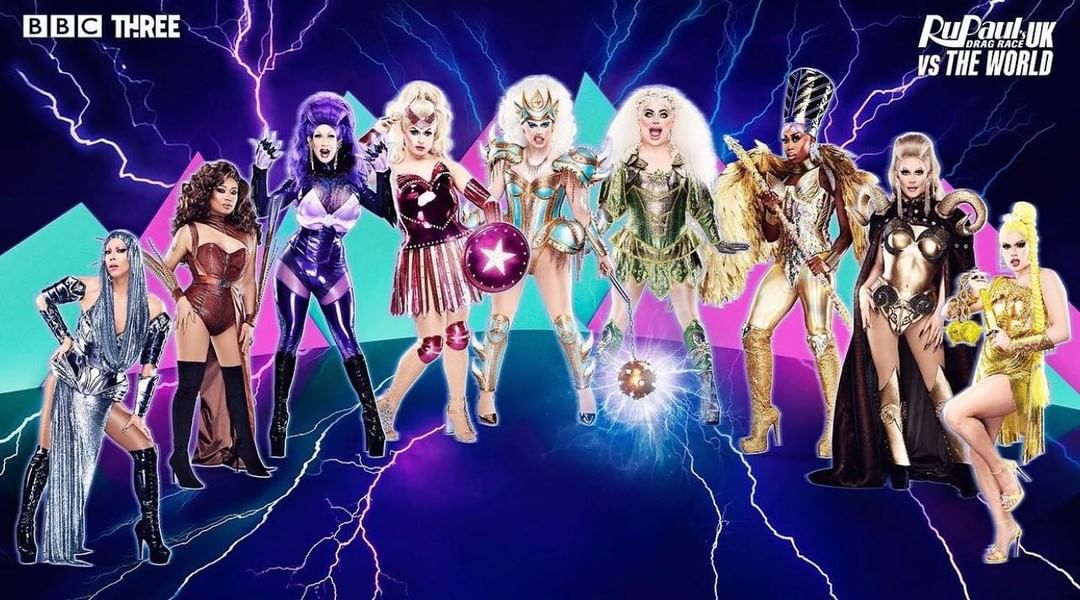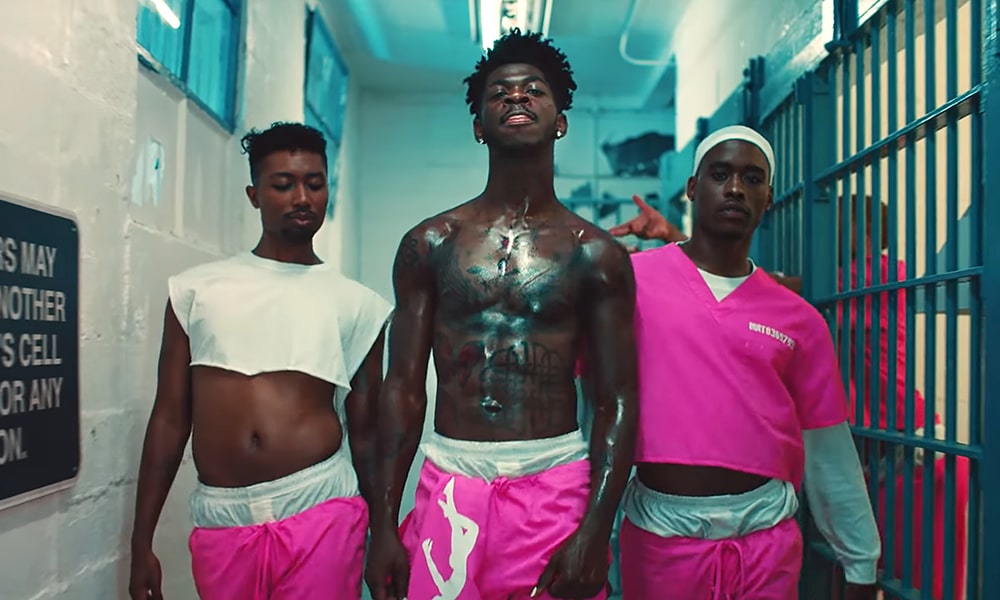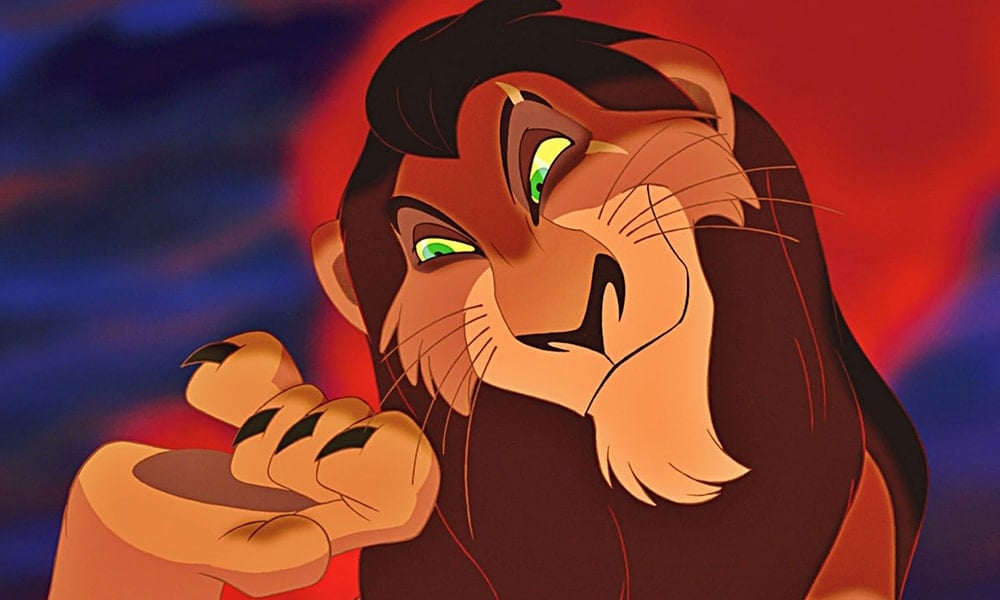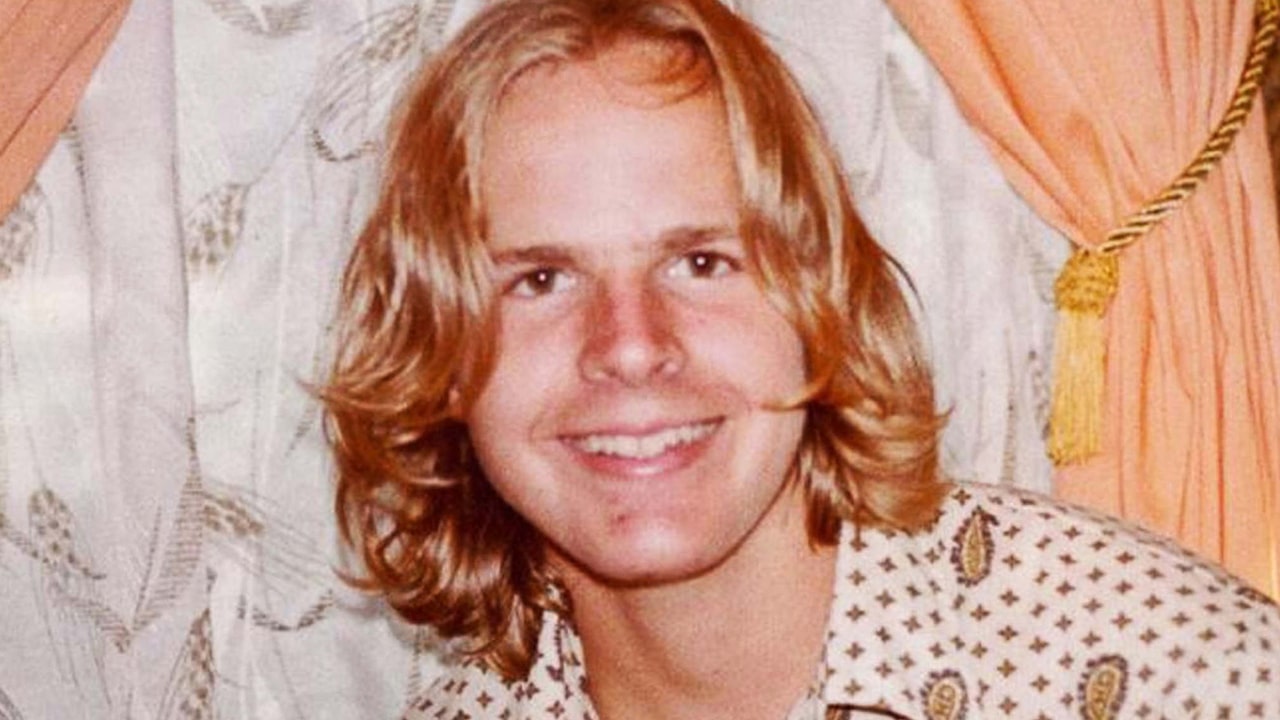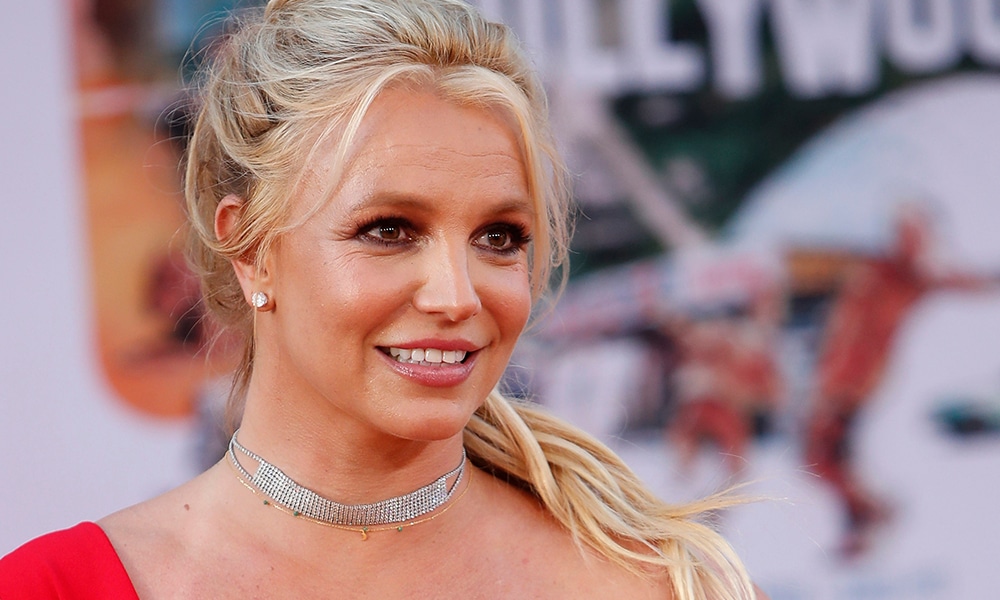The RuPaul’s Drag Race: UK Versus The World Cast Is Here!
Calling all drag fans, the cast of RuPaul’s Drag Race: UK Versus The World has been revealed.
A Easy Guide To How To Gain Followers On TikTok
How To Get Followers On TikTok: The Top Tips & Strategies
One of the newest social media platforms, TikTok has exploded in popularity because of its short, engaging video content. However, it can be really hard to gain followers and create the right TikTok content to increase your reach.
Wondering how to get more followers on TikTok and how to be TikTok famous? Follow our easy guide to build your target audience. Whether you have a new TikTok profile or you just haven’t been as focused on gaining followers, these tips can help you get more engagement!
RELATED | How To Take the TikTok Kink Test
Target Specific Demographics
One of the biggest rookie mistakes that TikTok creators make is trying to create content designed to appeal to everyone. Find your niche audience, target your social media content to them, and think about what kinds of videos they would enjoy watching.
Not sure where to start? Take a look at what similar TikTok influencers are posting and note what their most popular videos are. Use these numbers and their content to come up with your own ideas for your feed.
Think about your potential TikTok followers’ likes and dislikes as well. What would they like to see on a social media platform, and what would they avoid watching? Over time, you’ll be able to get a handle on what user-generated content would be most popular with them and increase brand awareness.
View this post on Instagram
Create TikTok Challenges
Not sure how to become TikTok famous? One of the easiest ways to get more followers on TikTok is to create video challenges or participate in a current TikTok game. Scroll through the app to see which TikTok challenge is trending and think about how they will fit your TikTok account. It’s a great way to build brand awareness and introduce TikTok users to your unique content!
Pay Attention To Trends
While it’s good to make unique content, you should also pay attention to what’s trending on TikTok. Visit the Discover Page to identify hot TikTok trends and create engaging content to upload ASAP.
Trends can include certain pop culture jokes, sound clips, trending songs, or a cool new video effect. Just make sure that even if you’re uploading quickly to take advantage of a trend, your own content is still high-quality and fun.
Use Search Keywords And Relevant Hashtags
Like other social media platforms, you can use content-specific hashtags and keywords to find content on TikTok. Think about how users search for content on TikTok. Building more specific keywords can make it easier for more TikTok users to find your videos.
While other TikTok creators may resort to tagging all the trending hashtags in their TikTok videos, this is a big no-no for gaining more followers. The TikTok algorithm rewards posts that are more targeted, and works against users that use a bunch of hashtags. Use the right hashtags to reach your target audience.
There are two hashtags that we recommend you include in all your TikTok videos: #foryou and #fyp. While it’s not confirmed to increase your chances of ending up on the popular For You page, it can still help you reach a wider TikTok audience.
View this post on Instagram
Add A Call To Action
Thinking of how to get more TikTok followers to like and subscribe to your social media channels? End your TikTok video with strong CTAs. Your calls to action can ask your target audience to visit your profile, follow you, or view your other videos. You can use a simple text sticker to do this.
While doing this with all your videos might turn off your targeted followers, it’s perfectly fine to do this every now and then. One simple way that you can do this without being too obvious is to create videos with multiple parts. “Follow to catch part 2!” is a clear CTA that can help you gain engaged followers.
Try TikTok Ads
If you have the budget to spare, you can try this to see if it will boost your visibility on your audience’s TikTok feed. Brand takeovers and in-feed ads are a popular way to appear on a user’s feed on the “For You” page.
Note that you’ll still need to create your own video content, so think of creative ideas that will catch a larger audience’s interest.
View this post on Instagram
Engage With Other TikTok Users
Remember to keep the conversation going with your TikTok followers. Like and comment on their videos to get their attention and increase engagement. The one-on-one connection that you can get from comments is valuable for building rapport with a larger audience.
If you’re thinking about how to get a lot of followers of TikTok, you should also try creating TikTok duets or stitching your videos to those of other users. Dueting places your video next to theirs in a unique post, allowing you to react to their content or complement it. Stitching lets you add your video to the end of theirs.
Don’t just stitch or duet with a video simply because it’s popular! Make sure that you’re stitching or dueting with content that is relevant to your own. This strengthens your TikTok identity and helps you carve out a more defined niche for your videos.
Cross-Promote To Other Platforms
Let your followers on other social platforms know that you’re on TikTok! Your Youtube and Instagram followers may not know that you have a TikTok profile, so it’s smart to give them a heads-up to like and follow there too.
Twitter and Instagram make it easy to reshare your feed videos: you can save a user’s video with the TikTok logo and the content creator’s handle. You can then upload them to Twitter or Instagram as is. This will make it easy for your followers to find and follow your account.
View this post on Instagram
Try These Basic Tricks To Get More Followers
You don’t need to hire a social media marketer to become popular on TikTok. Get inspired by these ideas and have a look at what other brands and users are doing. By engaging with more users and making use of the right trends, you can quickly build up a genuine audience on TikTok.
This platform is a great way to boost a brand’s visibility, drive traffic to a site, or simply amass a bigger social following. With a large enough audience, you can even start getting paid to be a TikTok influencer, so keep posting and see which tips work best for you!
RELATED | Ricky Martin’s Instagram Story Leaves Fans Thirsty
Here’s the Best Time to Post on TikTok According to Analytics
The Best Time To Post On TikTok: Maximizing Your Reach
Over the past few years, we’ve seen the rise and fall of popular social media platforms – think Vine, Musical.ly, and even Facebook to some extent. But since its launch in 2018, TikTok continues to be one of the fastest-growing social platforms with over 1 billion active users today.
So how do you make your videos discoverable on TikTok? How do you increase the chances of your videos appearing on the For You Page? The secret isn’t just in finding interesting ways to tell a story – your post has to reach more people.
Read more to find out the best time to post on TikTok, plus a few tips to get better engagement!
RELATED | How To Take the TikTok Kink Test
https://www.tiktok.com/@kathreen.onsocial/video/7036967760349498650
Why Does Scheduling Your Posts On TikTok Matter?
Because the For You Page is an endless stream of videos, it’s important to know when to post on TikTok. Posting content when your audience is online on TikTok increases the chances that they’ll see it. On the other hand, posting when people aren’t online means your post will get less reach and engagement.
For maximum reach and engagement, create a posting schedule around your followers.
How To Use The TikTok Algorithm To Your Favor
Algorithms on other platforms can be tricky. But last year, TikTok revealed how their For You Page works. The algorithm on TikTok depends on specific criteria: engagement, audience retention, trends, and when the user’s audience is active.
Since the For You Page suggests videos based on a user’s past interaction, you’ll need to get the broad TikTok audience to engage as much as possible with your content.
Your focus is threefold: create quality content, know your target audience, and understand TikTok trends. This means creating a publishing schedule based on your followers activity, using relevant hashtags and trending sounds in your posts.
Is Posting Too Much Content On TikTok Bad?
No, not really. TikTok won’t mind. It’s encouraged to post multiple times a day – one to three times is good. Bigger TikTokers post 10 times a day – but this isn’t recommended if you’re new.
Like anything else, all in moderation. So space out your postings. A good buffer is 2 hours in between. And follow the best times we suggest in this article
https://www.tiktok.com/@pinktoes12837/video/6896148063778245894
When Is The Best Time To Post On TikTok For Maximum Engagement?
Your content will be viewed most during the busiest hours of the day. Ensure that your content schedule revolves around your followers and their activity – more on that later.
Truth is, finding TikTok posting times that work for everyone is tricky. Not every TikTok creator has the same audience in the same time zone and location. Still, there are a few sweet time spots that work.
An extensive study by Influencer Marketing Hub shows that these are the best times to post on TikTok:
Monday: 6 AM, 10 AM, 10 PM
Tuesday: 2 AM, 4 AM, *9 AM
Wednesday: 7 AM, 8 AM, 11 PM
Thursday: 9 AM, *12 AM, 7 PM
Friday: *5 AM, 1 PM, 3 PM
Saturday: 11 AM, 7 PM, 8 PM
Sunday: 7 AM, 8 AM, 4 PM
The post times marked with * can give you higher engagement. In short, the best times to post are from 6 am to 10 am and 7 pm to 11 pm.
@jera.bean 3 THINGS I WISH I HAD STARTED DOING SOONER ON TIKTOK 🤯 #tiktoktips #tiktokadvice #tiktok101 #learnhowtotiktok #tiktokforbeginners
How Can You Find Your Personal Best Time To Post On TikTok?
When should you post content on TikTok? Easy. When is your audience awake?
As we mentioned, the best posting time is when your followers are most active. You can find out more about your followers in TikTok’s analytics section.
To get access to Analytics on TikTok, you’ll need a TikTok Pro account. But good news! It’s free.
How Do You Switch To A TikTok Pro Account?
Getting a TikTok Pro or Business account is a one-time process and an easy one at that. Here’s how to do it.
- Go to your TikTok profile page.
- Tap the three dots on the upper right corner to access your settings menu
- Tap “Manage Account.”
- Under “Account Control” tap “Switch to Business Account”
- Choose a TikTok account category. (Optional) Add in details you want to show on your profile like a website and email.
After this, a dialogue box should appear as confirmation.
How To Access Your Analytics
For aspiring creators and new users, the TikTok analytics section is a helpful resource where you can check your content performance
- Go to your profile and open Settings.
- Under “Account” choose “Creator Tools”
- Select “Analytics”
Note that TikTok analytics take a while to process after you’ve switched to a pro account. It can take up to seven days to show up.
Overview Tab
As the title says, it’s a general snapshot of your TikTok videos and your high performing content. These are stats like video views, profile views, likes, comments, and shares.
Here’s where you can also set a date range to access your data.
Content Tab
Here’s where you see stats for every individual post on TikTok. Look out for average watch time and video views per region. These give you a better idea of what time to post and how long your videos should be.
Followers Tab
This is the most important section to know what time to post on TikTok. While your profile shows how many followers you have, the analytics section helps you learn more details about them, like their gender or where your audience lives.
Know what time zones your followers occupy, and post from 6 am to 10 am or 7 pm to 11 pm. If you have a global audience spanning multiple time zones, you can nail down the best time to post by going to Top Territories, identifying your primary and secondary audience’s location, and timing your posts accordingly.
Where is your audience located and when are they active? Look at your Top Territories and Followers Activity. The time indicated is in coordinated universal time (UTC) so you’ll need to convert to your time zone.
LIVE Tab
See insights on your TikTok live streams for up to 28 days. This section shows info on views, watch duration, new followers, and how many diamonds you’ve earned.
Best Time To Post On TikTok: Final Thoughts
To sum it up, the best time to post content on TikTok is when your followers can see it. Know where your audience resides, what time zones they occupy, and when they view your posts – all accessible from the TikTok Analytics page.
But ultimately, content is still king. You may know the social media platform and its inner workings well, but what’s the point if your TikTok content isn’t engaging? So get out there, get dancing, and show your best self on TikTok!
RELATED| How JoJo Siwa Ended up With a Female Dance Partner on “DWTS”
Horny Jail: Meme Or Fabled Promised Land
Go To Horny Jail: All About The Meme
If you’ve been around internet culture, then you’ve been around memes. And one of the more recent memes that has been making the rounds on social media is the “Go To Horny Jail Bonk!” meme.
This meme depicts a dog (or more precisely a doge) that is condemning another doge to do their time in horny jail.
So what is horny jail? Why is this meme so popular? And how do you use this meme properly? It’s time to get your ‘bonk’ on and send some horny souls to their rightful imprisonment.
RELATED | Jonathan Van Ness Effortlessly Trolls Eminem On Twitter
What The Meme Means
This may come as a shock, but “horny jail” is not an actual place. You’re not going to be handcuffed and shipped off to a remote location full of other horny people serving their time. That would simply be too good to be true.
You are likely to get this meme if you’ve posted something thirsty or naughty on your main timeline. The meme is a doge bonking another doge for being perverted. These doges are stand-ins for the poster and the memer. The ‘bonked’ doge is meant to be the original poster to whom the memer is bonking. The memer being the one to send the poster to “horny jail.”
Horny jail is just a way to say that you are being too lewd or explicit, and it might be inappropriate for some people. You’re probably going to be sent to “horny jail” when you are being thirsty on your social media platform and you need to be teased for it.
The bonk was originally meant for people who were being “horny on main.” This is what happens when you reveal too much sexually on your “main” account, the subtext being that you have different accounts where you hide your other, less acceptable posts.
View this post on Instagram
The Origin Of the Meme
According to Know Your Meme, BaconatorSr posted an image of the two dogs on March 19, 2020, and it has garnered over a thousand five hundred likes and dozens of comments. From there it made the rounds on social media platforms gaining popularity and developing with every use, like most memes.
View this post on Instagram
The Spread Of The Meme
The meme of bonk go to horny jail has since been shared on Twitter, Instagram, and TikTok. It has good traction and people immediately started making their own versions of the meme. It’s also led to “horny jail” becoming a common reference point in internet culture.
They need to go to horny jail pic.twitter.com/VcAYIObT1H
— Vinn (@WhosUpAt3am) December 25, 2021
The Variations Of The Meme
Because this meme is so popular it immediately took off spawning tons of copycats with other animals bonking or condemning each other to horny jail. There are even posts with human characters doing the bonking.
It’s not just pictures either, on TikTok there is a song called Bonk! Go To Horny Jail. There are hundreds of variations with some using the Bonk! element for their own punchline.
The “Go To Horny Jail Bonk!” or “Bonk! Go To Horny Jail” meme gave rise to horny police meme. The “horny police” being the ones who would take you to horny jail if it was a real place – and we wish it was.
The officers of the imaginary police force against horniness arrest you for being too lewd on your main social media platform. They are meant to be a deterrent to keep you from posting horny stuff on main.
View this post on Instagram
How To Use It
Post this meme if someone you know is being too horny or sexually lewd about something on their social media. They might not know how badly they are coming off so this meme will be a good way to get them to tone it down without too much sting. It’s a light way to help someone correct their course.
You can also use it disparagingly against yourself in a self-deprecating way. People have been using this meme as a way to say that they are looking for love or that they find someone physically attractive.
They need to go to horny jail pic.twitter.com/VcAYIObT1H
— Vinn (@WhosUpAt3am) December 25, 2021
Is “Bonk! Go To Hony Jail” Culturally Relevant?
It’s been sampled by tons of people and has given rise to a new expression “horny jail” and the “horny police.” There are many memes that rise up and leave as quickly as they came but “go to horny jail” is changing as time goes on. This little meme has evolved into something more which is why it’s so important we know where it comes from.
https://www.instagram.com/p/CRYXG2NF1Y0/
Is The Meme Hampering Sex Positivity?
On the one hand, it might seem like the meme is sex-negative since it’s being used to keep the dirty stuff off the main timeline, but it’s also a playful way of telling someone they are teetering on the edge of the line. Usually, this meme is just the punchline of a joke, so it’s a little scold without much judgment.
While the meme might be a way for the more sexually conservative in the audience to express themselves, the language of “horny jail” has been empowering. People are using “horny jail” to announce their own reasons for being sent there. Some will post things like: “The things I would do to Ryan Reynolds would put me in horny jail.”
This meme gives users language to talk about sex more openly, even if it’s to express discomfort which is a good thing. Part of sex-positivity is being able to tell people that they are making you uncomfortable and learning how to set boundaries. If this meme helps that in any way then it’s a good thing.
View this post on Instagram
Final Thoughts
Everyone has a different tolerance for sexual language on social media. Sometimes someone being horny on their main timeline can be a little much, so this meme is a gentle way to chastise someone for being excessive.
Often on the internet, you are either sainted or canceled, but this meme shows us that some people have developed the ability to express an opinion in a pretty non-threatening manner and then go about their business.
RELATED | LGBTQ Teens Create Online Subcultures To Fight Oppression
Hollywood Has A Queer Coding Problem
What Is Queer Coding? Unpacking This Hollywood Trope
Have you ever noticed how a lot of cartoon villains are kinda…gay? Think about it. HIM from “The Power Puff Girls” wore thigh-high stilettos, a poofy dress, and spoke in a high-pitched voice. Scar from Disney’s “The Lion King” has a flair for the dramatic and feminine body language. Ursula from “The Little Mermaid” was based on real-life drag queen Divine. While their creators haven’t explicitly stated that these characters are queer, there’s enough subtext to suggest otherwise. That’s queer coding. But is it necessarily a bad thing? And where did this trope even come from? Let’s unpack queer coding.
RELATED | ‘Luca’, Disney and Queerbaiting in Animation
What Is Queer Coding?
Queer coding is a term used in media studies to describe characters that, though aren’t explicitly confirmed to be queer, have traits, behaviors, and dialogue that can be associated with queerness. These stereotypes are used to allude to a character’s queerness, so you can make the assumption for yourself without the authors explicitly stating it in the film or TV show.
If you grew up watching Disney movies as a kid, you’ll know exactly what we’re talking about. Disney films of the past were rife with queer-coded characters. In “Peter Pan” you have the flamboyant Captain Hook. In “Pocahontas” you have Governor Ratcliffe, who wore bows in his hair and glittery capes. Tarzan’s “Terkina”, who was voiced by lesbian comedian Rosie O’Donnell, is a straight up butch. And in “Lilo and Stitch” you have Pleakley, who loved to disguise themselves in feminine clothing and makeup.
View this post on Instagram
Queer Coding: A Brief History
As with most Hollywood tropes, the queer-coded character has a long and storied history.
Between 1934 to 1968, Hollywood movies had to abide by the Motion Picture Production Code, also known as the Hays Code. Under this strict set of guidelines, filmmakers had to ensure that their films wouldn’t “lower the moral standards of those who see it” and that “the sympathy of the audience shall never be thrown to the side of crime, wrongdoing, evil, or sin.” At the time, things like overt displays of sexuality, interracial romantic relationships, same-sex couples, and positive depictions of queerness were all considered morally wrong by conservatives, so naturally, the code would ban their depictions. Even things we would now consider benign, like “kissing in a horizontal position” or “nude silhouettes” were considered questionable.
What’s a filmmaker to do?
And while the code was voluntary, flouting it meant lowering your chances of getting your film played in theaters. As such, anyone who wanted to insert queer characters into their films had to get creative. Rather than writing a gay character into the script, which would never fly under the Hays Code, filmmakers would code their characters as queer, depicting queer-coded male characters as effeminate and flamboyant and queer-coded female characters as tomboyish, cold, and uninterested in men.
View this post on Instagram
Filmmakers could also more easily get away with portraying queer-coded or queer characters if they were depicted as either the butt of jokes or as evil villains. Remember, this was around the time when anti-sodomy laws and gay bar raids were commonplace across the US. At the time, the majority of Americans had a very negative view of queer people and the queer community, and as such, many filmmakers would perpetuate harmful stereotypes like “the sissy” or the “sadist”.
Queer characters would also be given a tragic storyline, usually getting killed off towards the end of the film. That’s why we have tropes like the “Bury Your Gays” trope, which is unfortunately still apparent to this day.
Do Queer-Coded Characters Count As Good Queer Representation?
Before the Stonewall riots and the gay rights movement, queer audiences had to settle for what little morsels of representation were available.
And while some gay men and women get a kick out of seeing themselves represented as a badass queer-coded villain, seeing characters similar to you continually depicted as reprehensible and immoral can definitely have a negative impact on your sense of self-worth.
Plus, these stereotypes didn’t disappear once the Hays Code became obsolete. In fact, many of the stereotypes that were born during the Hays era stuck around. They can be seen in hundreds of films. You can see the sissy archetype in Gaston’s bumbling sidekick Le Fou from “Beauty and the Beast”, the “sadist” in the brother-murdering Scar from “The Lion King”, the depraved lesbian in the cold-hearted housekeeper Mrs. Danvers in Alfred Hitchcock’s “Rebecca” and the psychotic trans woman in Michael Caine’s Dr. Robert Elliot.
So while queer coding isn’t inherently wrong, a negative portrayal doesn’t just have a harmful effect on a young queer audience, it also further perpetuates existing negative stereotypes.
View this post on Instagram
Queer Coding vs Queerbaiting
While queer coding isn’t always a bad thing – there are plenty of benign queer-coded characters out there – queerbaiting, on the other hand, is almost always problematic.
Queerbaiting is the act of inserting queer themes or implying that characters might be queer for the sole purpose of provoking and attracting more audiences. Oftentimes, queerbaiting looks like this: Authors/directors/producers will add a dash of homoerotic tension between two same-sex characters, often during series finales, as a ratings grab. A brush of the hand here, a lingering look there, a selfless, life-saving act here. And yet the two characters never really admit their supposed attraction for each other or take their relationship to the next level. Sometimes characters will share a kiss or enjoy a brief tryst. But more often than not, their storylines will fizzle out and be swept under the rug.
But wait, shouldn’t queer audiences be happy to see queer-coded and overtly queer characters get some action? Activists and media scholars will argue that, in 2021, it’s about time for queer people to get the representation they rightly deserve. And that means out and proud characters having healthy and happy relationships that don’t result in death.
View this post on Instagram
The Bottom Line
At a time when queerness was considered morally wrong, queer coding was a way for artists and writers to insert queer characters into their work without ruffling conservatives’ feathers. But today, the status quo has changed. LGBTQ+ people are getting the acceptance they rightly deserve. And more and more artists are able to portray gays, lesbians, bisexuals, non-binary, and trans people in a positive way. In animation, this is especially apparent, with canonically queer characters in shows like “Steven Universe”, “She-Ra”, and “Adventure Time”.
In turn, these positive portrayals are also changing the way audiences feel about LGBTQ+ people. While slowly destroying the negative stereotypes that have become prevalent in pop culture. With that being said, it seems that queer coding is turning into less of a necessity and becoming a relic of the past.



